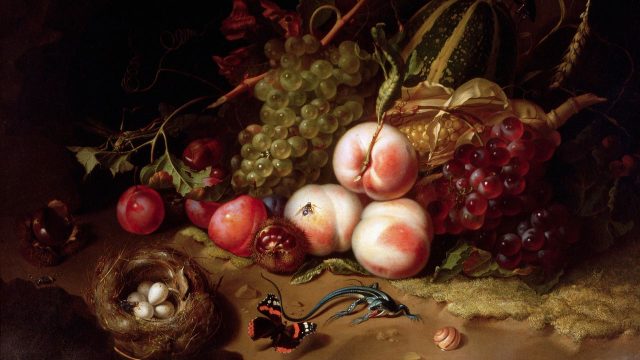
“Is it trivial to think of flowers in times like these?” asked Kelly Presutti in Art in America. Certainly not if the blossoms were painted by Rachel Ruysch, a Dutch artist who outsold Rembrandt in her day but has not been the subject of a major museum exhibition until the current traveling show, now at its final of three stops. Ruysch (1664–1750) painted floral still lifes “with an exquisite touch,” and “pure pleasure abounds” in any stroll through the show. But Ruysch also seemed to understand that beauty is “a reminder of our vulnerability,” of the fleetingness of life. In a typical Ruysch painting, “stems are snapped, leaves yellow and wilt,” and “a lizard prepares to pounce on a nest of freshly laid eggs.” She shows us bountiful bouquets. And yet “the world holds together in its wondrous beauty, Ruysch’s work suggests, because we will it to be so.”
Describing Ruysch’s paintings as still lifes “feels like a misnomer,” said Murray Whyte in The Boston Globe. “They teem with slimy insects and reptiles,” examples of which her naturalist father kept in jars at her childhood home in Amsterdam. The exhibit’s “dazzling” first gallery simulates what it would have been like to grow up amid that globe-spanning menagerie. The room, “lit like a sideshow of macabre delight,” displays butterfly, beetle, and reptile specimens on loan from Harvard, and reminds us that Ruysch was a product of an age when Dutch explorers were “hauling back all kinds of exotica,” stirring wonderment. You could argue that still life painting, the only genre open to women, flattered its patrons by reflecting back their new wealth in all its excess. But in Ruysch’s work, you sense “the riotous curiosity of an active mind trying to capture the shock of the new in a world freshly without limits.” And beyond that, her routine inclusion of scavengers, predators, and decay suggests that she recognized “the perils of progress alongside its bounty.”
“In some ways, Ruysch, though too long neglected by posterity, was like the lucky bees she painted,” said Sebastian Smee in The Washington Post. She gorged on the beauty of the flowers and fruits the era presented her with, and meanwhile gave birth to 10 children, kept her maiden name, worked as a court artist, took a hiatus when she and her husband won the lottery, then continued painting nearly into her 80s. Portraits of female artists were rare at the time, but Ruysch appears in three, said Cullen Murphy in Air Mail. One on display is a collaboration with an established male painter 20 years her senior. He rendered Ruysch at work at age 29, palette in hand and flowers nearby. Like the duet albums Tony Bennett recorded with Lady Gaga, the pairing of the two artists “acknowledges Ruysch’s stature in a realm of her own creation.”
Museum of Fine Arts, Boston, through Dec. 7




